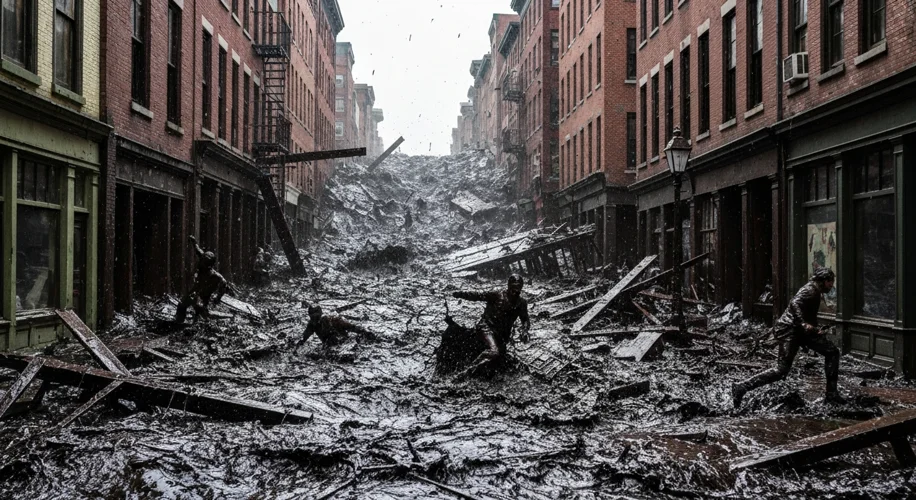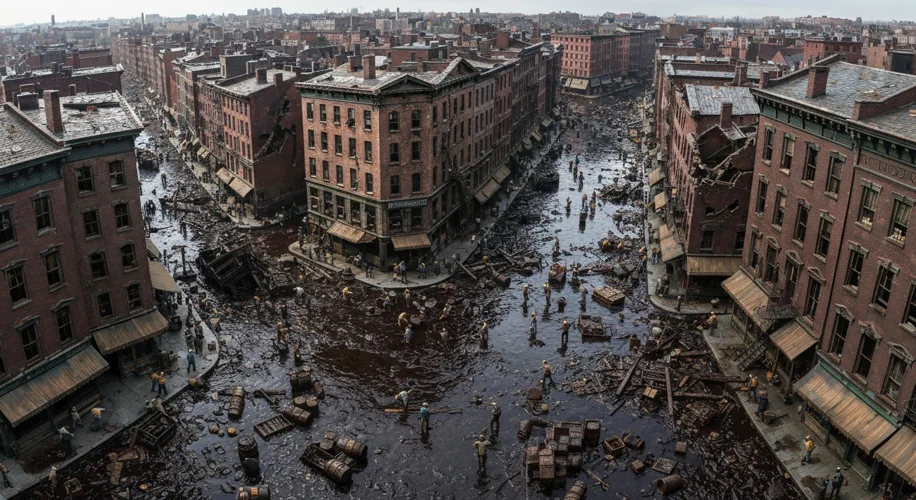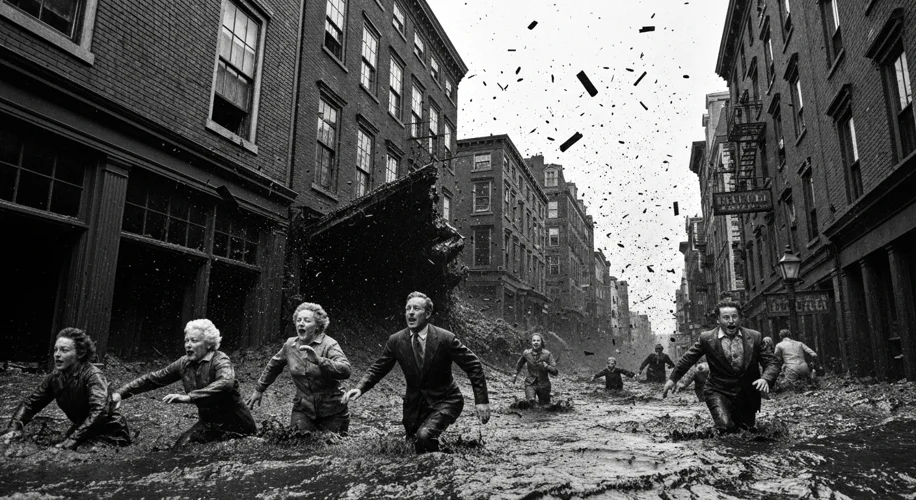The air in Boston’s North End on January 15, 1919, was unusually warm for January, a balmy 40 degrees Fahrenheit. Beneath the elevated tracks of the Boston Elevated Railway, near the waterfront, a colossal metal tank stood, holding an estimated 2.3 million gallons of molasses. It was a familiar sight, a behemoth of industry that had been a part of the neighborhood for years, quietly storing its sweet, viscous cargo for the Purity Distilling Company.
But this particular day, the atmosphere was charged with more than just unseasonably warm weather. There were ominous groans and creaks emanating from the massive tank, sounds that residents, and likely even the company’s employees, had grown accustomed to dismissing. They were the sounds of a giant settling, or so they thought. Little did they know, these were the death throes of a structure on the brink of catastrophic failure.

At approximately 12:30 PM, the unthinkable happened. With a deafening roar that echoed through the narrow streets, the tank burst. It was not a slow leak or a gradual seepage; it was an explosive rupture, a violent detonation that unleashed a tsunami of thick, dark molasses. The wave, estimated to be 25 feet high and moving at an astonishing 35 miles per hour, surged through the neighborhood with the destructive force of a natural disaster.
The sheer power of the flood was unimaginable. Buildings were instantly crushed, their wooden structures splintering under the immense pressure. Wagons were tossed aside like toys, horses were swept away and drowned in the sticky tide, and people were trapped, unable to escape the suffocating embrace of the molasses. Some were crushed by the debris, while others drowned in the thick, suffocating liquid. The sweet aroma of molasses, usually a comforting scent associated with rum production, was replaced by the horrifying stench of death and destruction.
The rescue efforts were immediate but fraught with difficulty. The molasses was so thick and sticky that it ensnared rescuers as well as victims. Horses and carts became mired, hampering efforts to reach those in need. The cold January air, while offering some relief by slightly solidifying the molasses, also made the conditions for the survivors even more desperate. Survivors described the terror of being submerged, the struggle to breathe, and the chilling realization that rescue was a slow, arduous process.
Over the next few hours and days, the grim reality of the disaster became clear. Twenty-one people lost their lives, and approximately 150 were injured. The economic damage was immense, with businesses destroyed and the waterfront infrastructure severely compromised. The North End was coated in a thick layer of molasses, a sticky, dark shroud that took weeks to clean up, even with the help of fire departments andCleanup crews using saltwater hoses and sand.
The aftermath of the Great Molasses Flood was not just about the immediate tragedy. It sparked a lengthy and complex investigation into the cause of the tank’s failure. It was revealed that the tank had been hastily constructed, poorly maintained, and was known to leak. Despite these warning signs, the Purity Distilling Company had continued to fill it to capacity, prioritizing profit over safety. This led to one of the first class-action lawsuits in Massachusetts, holding the company liable for the disaster.

The Great Molasses Flood stands as a stark reminder of the potential consequences of corporate negligence and the vital importance of robust safety regulations. It wasn’t just a freak accident; it was a preventable tragedy born from a disregard for human life in the pursuit of profit. The memory of that day, the sticky, dark wave that swept through Boston’s North End, continues to serve as a cautionary tale, echoing through history as a testament to the fragility of human endeavors and the enduring power of nature – and sometimes, of a seemingly harmless sweet substance.
The clean-up itself became a historical event, with residents reporting that the sweet scent of molasses lingered in the air and on the bricks for decades, a ghostly reminder of the day the sweet became deadly.

